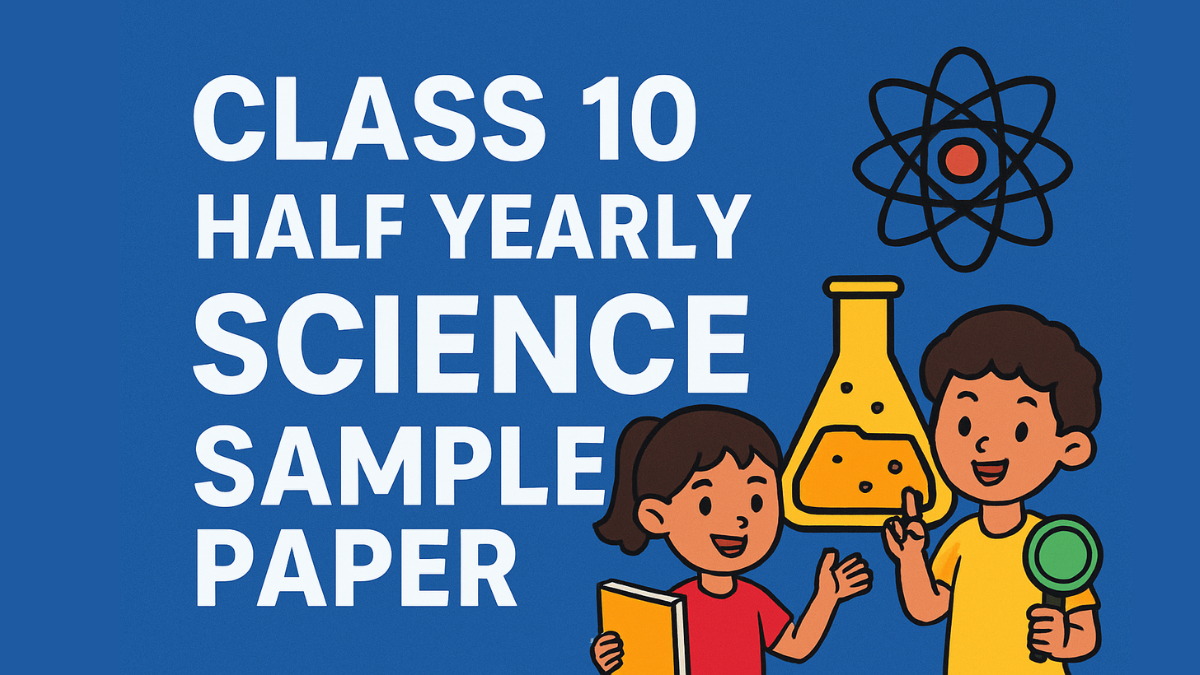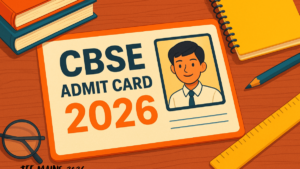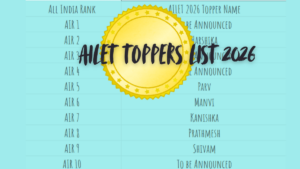The majority of CBSE-affiliated schools have begun or will soon begin the half-yearly or mid-term examinations for Class 10 students. Most students’ syllabi have not been finalized because the academic year is still in progress. To assist them, we have provided the Class 10 Half Yearly Science Sample Paper 2025 with Solutions, which is based on the half-year syllabus. Aspirants should review and practice these example papers to determine their strengths and shortcomings. It also helps students understand their exam preparation.
CBSE Class 10 Half Yearly Science Sample Paper 2025
Science is one of the most important subjects that helps students to boost their board exam scores with minimal effort. As half-yearly exams are at the threshold, Students who are looking for the CBSE Class 10 Half yearly Science Sample Paper 2025 must refer to the expected paper shared on this page. Our highly experienced Subject matter experts prepare this paper after a thorough analysis of CBSE science previous year question papers.
Apart from the Adda Education’s sample paper, students may also practice the official CBSE Class 10th Science Sample question papers to know the exact question paper pattern, marking scheme, and many more.
CBSE Science Half Yearly Science Sample Paper Pattern 2025
The CBSE Class 10 Science Half Yearly Question Paper 2025 will consist of 39 questions divided into five sections. Section A worth 20 marks, Section B 12 marks and section C 21 marks, rest you can see in the table below. The CBSE Class 10 Science theory exam will be of total 80 marks long and will last three hours. Students will have an additional 15 minutes to peruse the question paper.
| CBSE Class 10 Science Half Yearly Paper Pattern (Code 041) | |
|
Section A: Objective Type Questions
|
(20 marks) |
|
Section B: Short Answer Type Questions – I
|
(12 marks) |
|
Section C: Short Answer Type Questions – II
|
(21 marks) |
|
Section D: Long Answer Type Questions
|
(15 marks) |
|
Section C: Case Study Based Questions
|
(12 marks) |
| CBSE Class 10 Science Half Yearly Paper Question Wise Marks | |||
| Section | Type of Questions | Number of Questions | Marks per Question |
| A | objective type questions | 20 | 1 |
| B | Very Short questions | 6 | 2 |
| C | Short Answer type questions | 7 | 3 |
| D | Long Answer type questions | 3 | 5 |
| E | source-based/case-based units of assessment | 3 | 4 |
| CBSE Class 10 Sample paper of Other subjects | |
| Class 10 Hindi Sample Paper with Solutions | Class 10 SST Sample Paper with Solutions |
| Class 10 English Sample Paper with Solutions | Class 10 Maths Sample Paper with Solution |
| Class 10 Science Sample Paper with Solutions | Class 10 Computer Sample Paper with Solution |
| CBSE Class 10 Science Units wise and Internal Assesment Weightage | |
| Chapter Name | Total Marks |
| 1. Chemical Reactions and Equations | 6 |
| 2. Acids, Bases and Salts | 3 |
| 3. Metals and Non-metals | 10 |
| 4. Carbon and its Compounds | 6 |
| 5. Life Processes | 9 |
| 6. Control and Coordination | 6 |
| 7. How do Organisms Reproduce? | 3 |
| 8. Heredity and Evolution | 7 |
| 9. Light – Reflection and Refraction | 10 |
| 10. The Human Eye and the Colourful World | 2 |
| 11. Electricity | 7 |
| 12. Magnetic Effects of Electric Current | 6 |
| 13. Our Environment | 5 |
| Total | 80 |
| Internal Assessment 2025-26 | |
| Internal Assessment – 20 Marks | |
| Periodic Tests | 5 Marks |
| Subject Enrichment Activities | 5 Marks |
| Practical /Laboratory Work | 5 Marks |
| Portfolio | 5 Marks |
Class 10 Half Yearly Science Sample Paper 2025 with Solutions
The CBSE Class 10 Science paper consists of 39 questions in 3 sections. Section A is Biology; Section B is Chemistry, and Section C is Physics. The total marks of the question paper are 80 marks and students need to answer the paper within 3 hours. All questions are compulsory. However, an internal choice is provided in some questions. A student is expected to attempt only one of these questions.
| SECTION-A(BIOLOGY) |
Q.1 Identify the option that indicates the correct enzyme secreted in locations A, B, and C.

- (i)-lipase, (ii)-trypsin, (iii)-pepsin
- (i)-amylase, (ii)-pepsin, (iii)-trypsin
- (i)-trypsin, (ii)-amylase, (iii)-carboxylase
- (i)-permease, (ii)-carboxylase, (iii)-oxidase
Answer: (i)-amylase, (ii)-pepsin, (iii)-trypsin** (option 2) — mouth (amylase), stomach (pepsin), small intestine/pancreatic enzymes (trypsin).
Q.2 Opening and closing of stomatal pore depends on:
- Atmospheric temperature
- Oxygen concentration around stomata
- Carbon dioxide concentration around stomata
- Water content in the guard cells
Answer: Water content in the guard cells (D)
Q.3 Which adaptation in herbivores helps in digestion of cellulose? (1-Mark)
A. Longer large intestine
B. Smaller large intestine
C. Smaller small intestine
D. Longer small intestine
Answer: A. Longer large intestine.
Q.4 Rajesh noticed a potted plant in his room bending toward sunlight. This could be due to: (1-Mark)
A. More growth in the well-lit region due to diffusion of auxin hormone
B. More growth in the region away from light due to diffusion of auxin hormone
C. More growth in the well-lit region due to diffusion of cytokinin hormone
D. More growth in the region away from light due to diffusion of cytokinin hormone
Answer: B. More growth in the region away from the light due to the diffusion of the auxin hormone.
Q.5 Person X suffers from a condition affecting the normal functioning of the pituitary gland. Which is most likely a direct effect? (1-Mark)
A. Insufficiency of iodine
B. Irregular heartbeat
C. Insufficient growth of the body
D. Inability to regulate blood sugar
Answer: C. Insufficient growth of the body
Q.6 The time duration from the sowing of seeds to the harvest of crops is critical for agricultural purposes. Based on the information above, select a reason why farmers prefer vegetative propagation for growing crops. (1-Mark)
- Seedless crops can also be reproduced.
- Offspring plants are genetically similar to parent plants.
- Plants grown by vegetative propagation bear fruits earlier.
- Vegetative propagation does not depend on external agents of pollination.
Answer: 3. Plants grown by vegetative propagation bear fruits earlier.
Q.7

Which type of tropism is observed in the diagram? (1-Mark)
A. Geotropism B. Phototropism
C. Hydrotropism D. Chemotropism
Answer: A. Geotropism
The following question consists of two statements – Assertion (A) and Reason (R). Answer these questions by selecting the appropriate option given below:
- Both A and R are true, and R is the correct explanation of A.
- Both A and R are true, and R is not the correct explanation of A.
- A is true but R is false.
- A is false but R is true
Q.8 Assertion: Amphibians can tolerate mixing of oxygenated and deoxygenated blood. (1-Mark)
Reason: Amphibians have a two-chambered heart.
Answer: (option 3) A is true, R is false. — amphibians tolerate mixing, but they have a three-chambered heart, not two.
Q.9 Assertion (A): Significant difference in concentrations of ions observed between fluid in xylem cells of roots and soil. (1-Mark) Reason (R): Xylem cells in roots, in contact with soil, actively take up ions.
Answer: (option 1). Both A and R are true, and R is the correct explanation of A.
| SECTION-B(CHEMISTRY) |
Q.17 Which of the following equations represent redox reactions and what are the values for ‘x’ and ‘y’ in these equations? (1-Mark) Equation 1: CuO(s) + H2(g) → Cu(s) + x H2O(l)
Equation 2: CH4(g) + 2O2(g) → y CO2(g) + 2H2O(g)
- Only equation 1 is a redox reaction, x = 2 and y = 1
- Only equation 1 is a redox reaction, x = 1 and y = 1
- Only equation 2 is a redox reaction, x = 1 and y = 2
- Both equations 1 and 2 are redox reactions, x = 1 and y = 1
Answer: (option 4). Both equations 1 and 2 are redox reactions, x = 1 and y = 1.
Q.18 Four statements about the reactions of oxides with dilute hydrochloric acid and aqueous sodium hydroxide are listed. (1-Mark) I. Copper(II) oxide reacts with aqueous sodium hydroxide, but not with dilute hydrochloric acid
II. Zinc oxide reacts with both dilute hydrochloric acid and aqueous sodium hydroxide.
III. Magnesium oxide reacts with dilute hydrochloric acid but not with aqueous sodium hydroxide.
IV. Carbon dioxide reacts with aqueous sodium hydroxide but not with dilute hydrochloric acid.
Which statements are correct?
- I and II B. II and IV
- I and III D. II, III and IV
Answer: (option D) II, III and IV are correct.
Q.19 A strip of zinc metal is placed separately in two test tubes — ‘X’ containing aqueous copper(II) sulphate solution and ‘Y’ containing aqueous magnesium sulphate solution. Which of the following observations is correct? (1-Mark)
- In test tube ‘X’, a reddish-brown coating is seen on zinc strip, while in test tube ‘Y’ no reaction takes place.
- In both test tubes ‘X’ and ‘Y’, zinc strip gets coated with a grey layer.
- In test tube ‘X’ no reaction occurs, but in test tube ‘Y’ zinc strip is coated with magnesium.
- In neither of the test tubes does any reaction take place.
Answer: In test tube ‘X’, a reddish-brown coating is seen on zinc strip, while in test tube ‘Y’ no reaction takes place.
Explanation:
Zinc is more reactive than copper, so it displaces copper from CuSO₄ solution → reddish-brown copper deposits on zinc.
Zinc cannot displace magnesium from MgSO₄ because magnesium is more reactive than zinc → no reaction in test tube Y.
Q.20 Which of the following substances, when dissolved in equal volume of water, will have the lowest pH value? (1-Mark)
A. Potassium hydroxide B. Sodium carbonate C. Hydrochloric acid D. Ammonium hydroxide
Answer: C. Hydrochloric acid
Q.21 Phenolphthalein is added to dilute hydrochloric acid and to aqueous sodium hydroxide. What is the colour of the phenolphthalein in each solution? (1-Mark)
Sample Colour in dilute hydrochloric acid Colour in aqueous sodium hydroxide
A colourless Pink
B Pink Colourless
C Orange Yellow
D red Pink
Answer: A. Colourless in dilute hydrochloric acid and Pink in aqueous sodium hydroxide.
Explanation:
Phenolphthalein is colourless in acidic solution (HCl) and pink in basic solution (NaOH).
| SECTION-C(PHYSICS) |
Q.30 Mirror ‘X’: Concentrates sunlight in a solar furnace. (1-Mark) Mirror ‘Y’: Fitted on vehicle to see traffic behind driver.
Which statements are true?
(i) Image formed by ‘X’ is real, diminished, and at its focus.
(ii) Image formed by ‘Y’ is virtual, diminished, and erect.
(iii) Image formed by ‘X’ is virtual, diminished, and erect.
(iv) Image formed by ‘Y’ is real, diminished, and at its focus.
(A) (i) and (ii) (B) (ii) and (iii)
(C) (iii) and (iv) (D) (i) and (iv)
Q.31 In the given figure, what are the angle of incidence and angle of deviation? (1-Mark)

(A) 1 and 5 (B) 7 and 6
(C) 7 and 4 (D) 1 and 6
Q.32 The following question consists of two statements – Assertion (A) and Reason (R). Answer these questions by selecting the appropriate option given below:
- Both A and R are true, and R is the correct explanation of A.
- Both A and R are true, and R is not the correct explanation of A.
- A is true but R is false.
- A is false but R is true
Assertion (A): A point object is placed 26 cm from a convex mirror with focal length 26 cm. The image will not form at infinity. (1-Mark) Reason (R): For above, the equation 1��= 1��+ 1��gives v = ∞
Q.33 A wire of length ‘l’ is gradually stretched so that its length increases to 3l. If its original resistance is R, then its new resistance will be? (2-Marks)
Q.34 You are given 2 fuse wires A and B with current ratings 2A and 5A respectively. Justify with reason which of the two would you use with a1000W, 220V room heater? (2-Marks)
35 A. What is the fundamental difference between hypermetropia and myopia in terms of the optical experience of a person? (3-Marks)
B. The diagram below shows a special case of an eye defect.

(i) What is the defect that is shown in the figure?
(ii) State one cause for such a defect?
(iii) Explain with reason if a concave lens can be used to correct the defect.
Q.36 An object is placed at a distance of 60 cm from a concave lens of focal length 30 cm. (a) Use lens formula to find the distance of image from the lens. (3-Marks) (b) Draw a ray diagram to justify your answer in part (a).
Q.37 (a) Why is a normal eye not able to see clearly the objects placed closer than 25 cm? (b) With the help of a diagram show recombination of the spectrum of white light. (3-Marks)
If you want to download the science half-yearly question paper with solutions PDF, then you can do so by simply clicking the PDF link shared below.
| Related Posts | |
| CBSE Class-10 Science Competency Questions | CBSE Class 10 Science sample paper |
| Class 10 Science Past year Question Paper | CBSE Class 10th Science Syllabus |











 CBSE Admit Card 2026 for Private & R...
CBSE Admit Card 2026 for Private & R...
 AILET 2026 AIR 1: Check Full Toppers Lis...
AILET 2026 AIR 1: Check Full Toppers Lis...
 AILET Result 2026 OUT, How to Download S...
AILET Result 2026 OUT, How to Download S...






